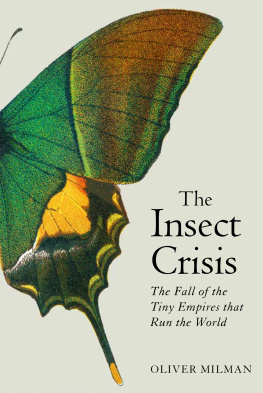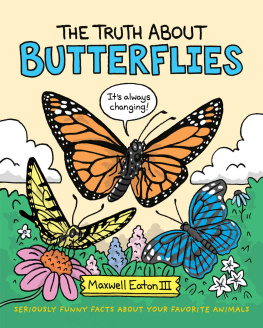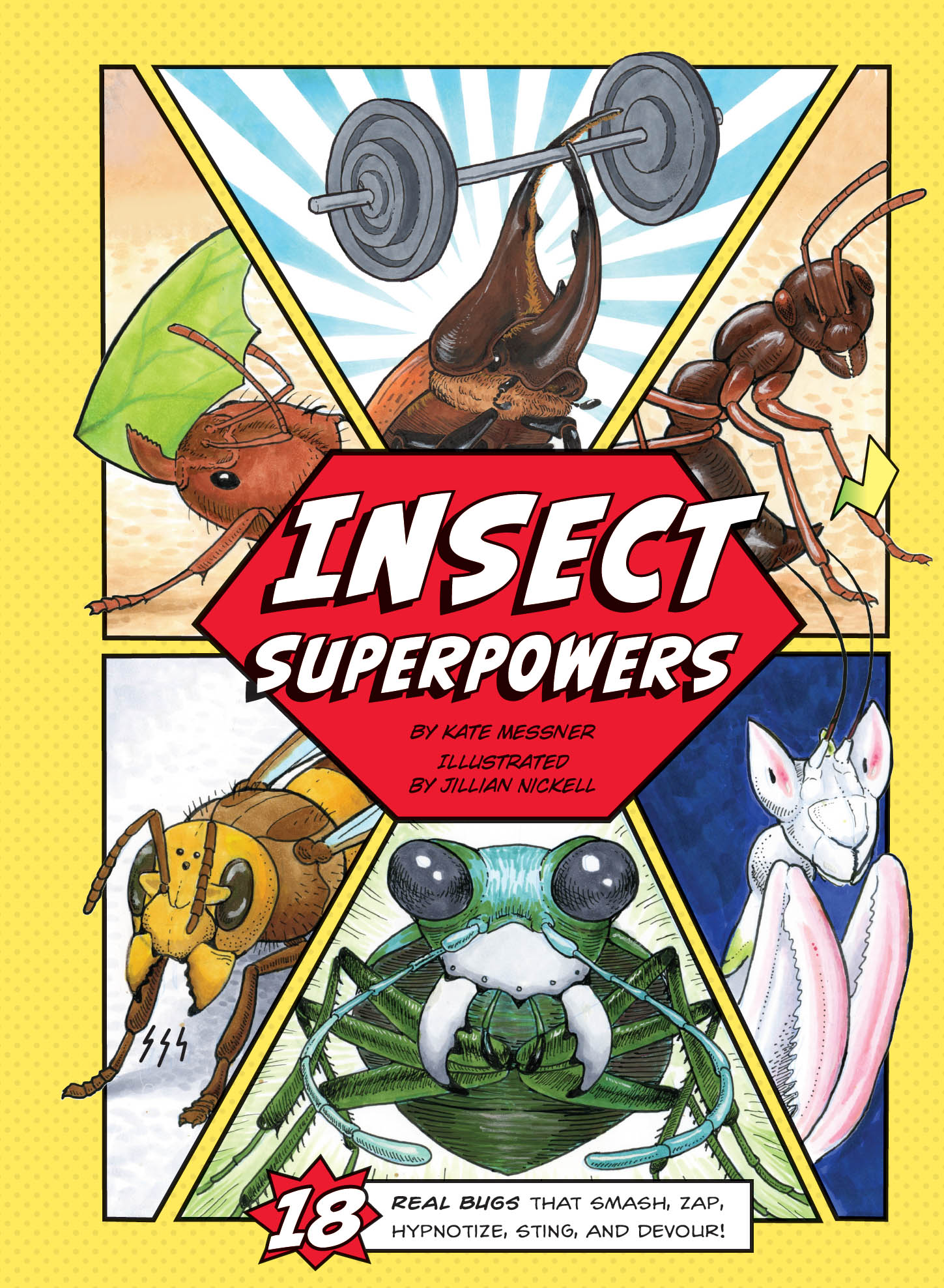

For Gayle Roy-Collin and the readers of Cumberland Head Elementary School
K. M.
For Sunny and Joe
J. N.
Text copyright 2019 by Kate Messner.
Illustrations copyright 2019 by Jillian Nickell.
All rights reserved. No part of this book may be reproduced in any form without written permission from the publisher.
Library of Congress Cataloging-in-Publication Data:
Names: Messner, Kate, author. | Nickell, Jillian, illustrator.
Title: Insect superpowers / by Kate Messner ; illustrated by Jillian Nickell.
Description: San Francisco, California : Chronicle Books, LLC, [2019] | Includes bibliographical references.
Identifiers: LCCN 2017030743| ISBN 9781452139104 (hc) | ISBN 9781452143651 (epub2) | ISBN 9781452143675 (epub3) | ISBN 9781452143668 (kindle)
Subjects: LCSH: InsectsJuvenile literature. | InsectsAdaptation-Juvenile literature. | InsectsBehaviorJuvenile literature. | Adaptation (Biology)Juvenile literature.
Classification: LCC QL467.2 .M475 2018 | DDC 595.7dc23 LC record available at https://lccn.loc.gov/2017030743
Design by ryan hayes and Jay marvel.
Typeset in CC Hedge backwards.
The illustrations in this book were rendered in Ink and Copic marker.
Chronicle Books LLC
680 Second Street
San Francisco, California 94107
Chronicle Bookswe see things differently. Become part of our
community at www.chroniclekids.com.
Chronicle books and gifts are available at special quantity discounts to corporations, professional associations, literacy programs, and other organizations. For details and discount information, please contact our premiums department at or at 1-800-759-0190.
CONTENTS

An Insect Family Tree
All living organisms are identified using a system called biological classification, where theyre organized based on common characteristics. This organization starts bigby asking questions like, Is it a plant, animal, or something else?and gets more specific as it goes along. The levels of classification, from largest to smallest, are: domain, kingdom, phylum, class, order, family, genus, species. The last two categories, genus and species together, make up an organisms scientific name.
Insects are all members of the animal kingdom, along with mammals, birds, and reptiles. Theyre part of the phylum Arthropoda, which includes not only insects, but also other creatures like spiders, crabs, lobsters, and centipedes. Getting more specific, all insects are part of the class called Insecta.
Insect Orders
Within the class Insecta are thirty orders with different kinds of insects. Some that you might recognize include:



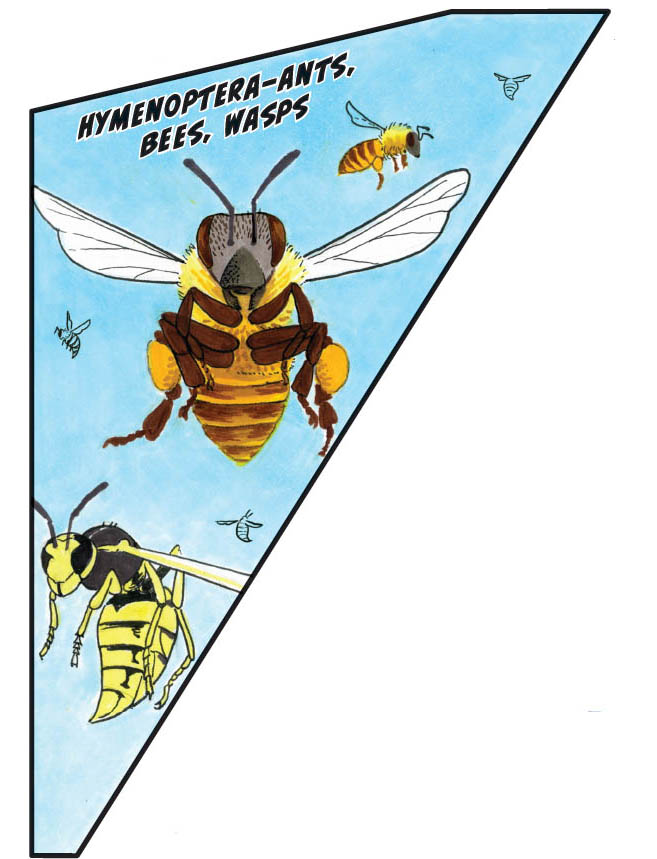
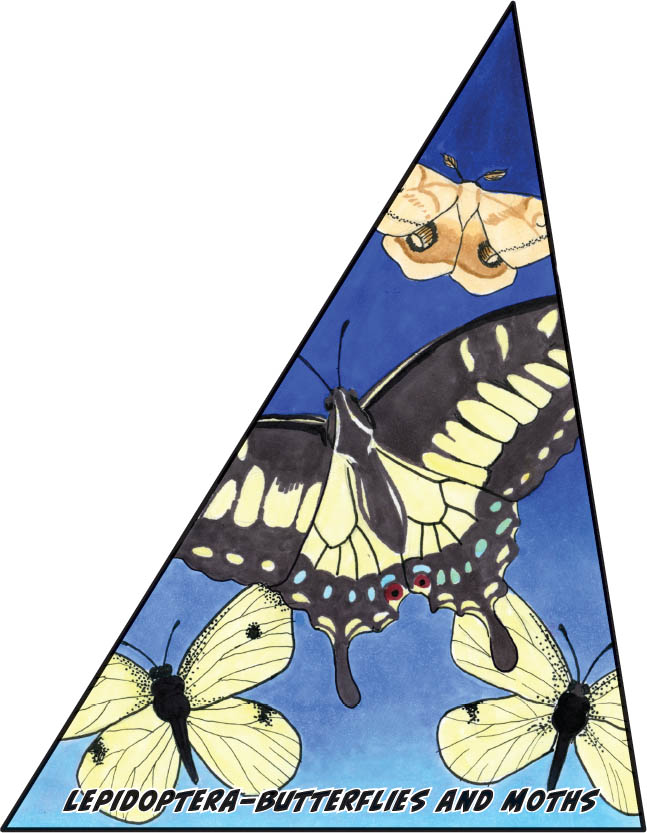
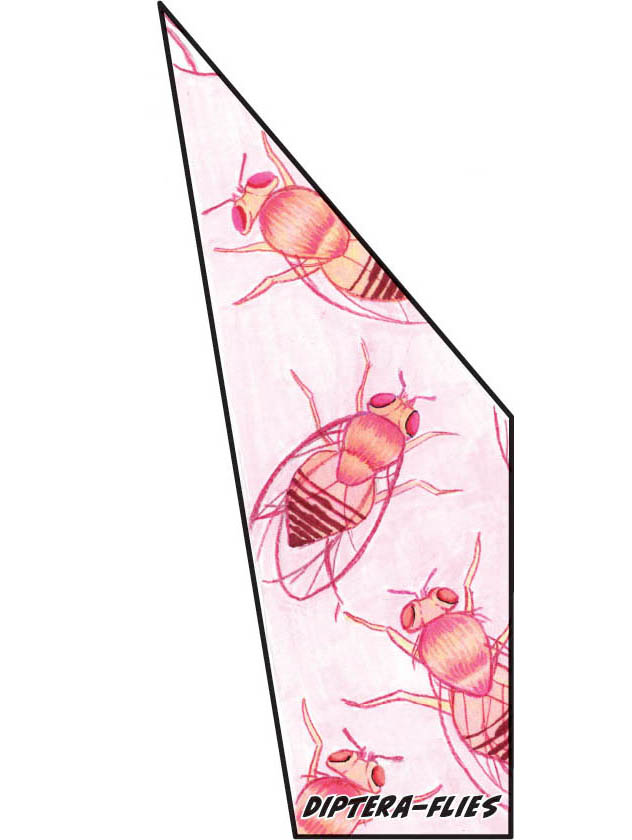
So the classification of a monarch butterfly, for example, would go like this:
Kingdom: Animalia
Phylum: Arthropoda
Class: Insecta
Order: Lepidoptera
Family: Nymphalidae
Genus: Danaus
Species: plexippus
a Monarch butterflys scientific name is Danaus plexippus, DAH- nay-us PLEX-i-pus. Its fun to say. Try it!

Chapter 1
FAST & FIERCE
With speeds that put Olympic runners to shame and jaws that can slice and dice in the blink of an eye, these insects superpowers are perfect for evading predators and catching prey.


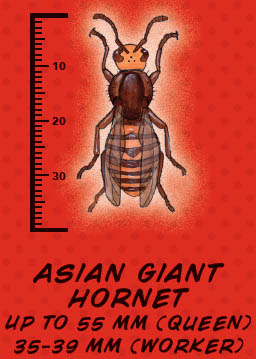

Common Name: Giant robber fly of the Great Plains
Aliases: Bee killer, assassin fly
Super-Scientific Name: Microstylum morosum
Trademark Features: Small hollow between the eyes, tufts of hair on the face that may resemble a beard
Size: 3050 mm
Secret Hideout: Prairies in Texas, Kansas, Oklahoma, and Arkansas
Superpower: Speed in flight
Favorite Food: Bees, grasshoppers, butterflies, beetles, other robber flies
Allies: There are more than seven thousand species of robber flies living all over the world. Theyre all part of the order Diptera, which includes all flies, and the family Asilidae. Microstylum morosum is the largest robber fly in North America.
Archenemy: The eastern kingbird (Tyrannus tyrannus) loves to swoop down from its perch and snap up a juicy robber fly for a meal.
Robber flies can fly fast enough to catch other insects in midflight. The robber fly often lies in wait on a twig or leaf where it can see its surroundings and watch for prey. When another insect flies too closeBUZZ, SWISH, ZAP!the robber fly darts out and captures it with long, strong, bristly legs that can hold tight to prey.
The Japanese beetle can fly long distancesup to five miles in search of food. But it cant fly fast enough to avoid becoming food for a hungry robber fly.

Once the robber fly has another insect in its clutches, it stabs the creature with its hypopharynx and injects saliva into its victims body. The robber flys spit contains super-bug chemicalsnerve toxins that paralyze the prey, and digestive enzymes that turn its insides to liquid, which the robber fly then sucks up through its proboscis
Next page


